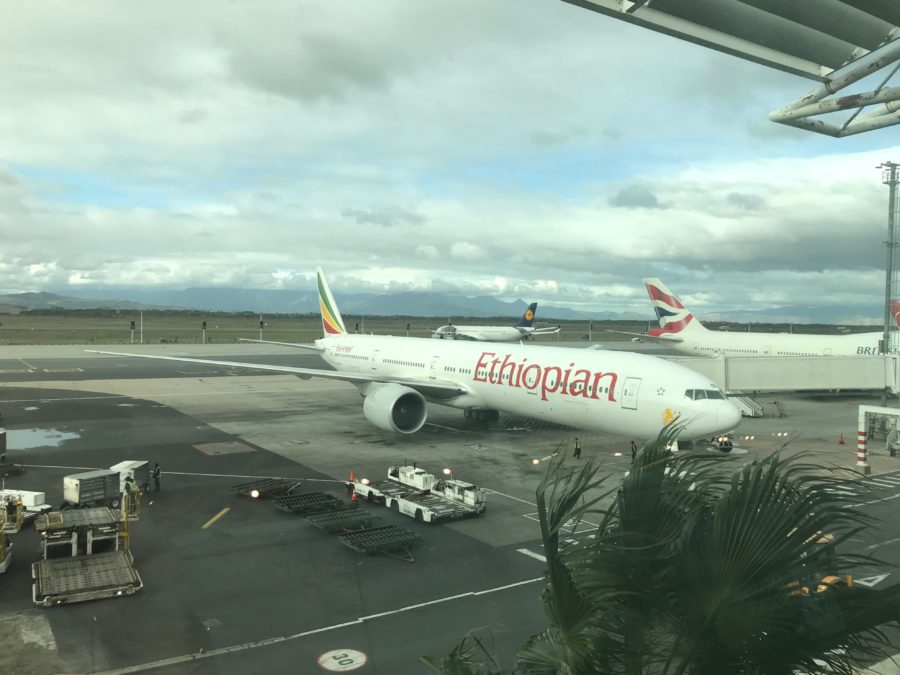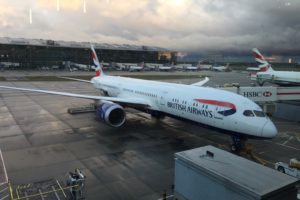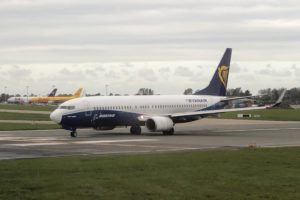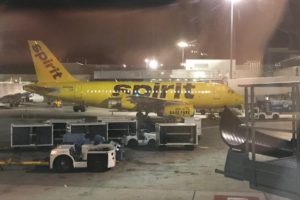Airline Profile: Ethiopian Airlines
The Facts:
| Alliance | Star Alliance |
| Competitors | National Airways Ethiopia Kenya Airways |
| Fleet Count | Around 98 |
| Founded | 1946 |
| Frequent Flyer Program | ShebaMiles |
| Headquarters | Addis Ababa, Ethiopia |
| Hubs | Bole International Airport (Addis Ababa) |
| Parent Company | Ethiopian Government |
| Skytrax Rating | 4 (out of 5) |
| Subsidiaries | N/A |
| Travel Classes | Economy Cloud Nine (Business Class) |
| Type of Airline | Full Service |
| Website | ethiopianairlines.com |
Analysis:
6 Things You Need To Know About Ethiopian Airlines
- Ethiopian Airlines operate out of Addis Ababa. The city (and airport) has an especially high altitude, so flights need more fuel to take off. Due to that, Ethiopian Airlines can’t operate direct flights to the United States without stopping. However, unless Ethiopian Airlines chooses not to, Ethiopian Airlines can fly directly from North America to Addis Ababa.
- Flights from Addis Ababa to Washington Dulles, Toronto, and Chicago stop in Dublin on the way to North America but fly directly back to Ethiopia.
- Flights from Addis Ababa to Newark stop in either Abidjan or Lome both ways on their way to Ethiopia.
- Flights from Addis Ababa to Los Angeles stop in Dublin both ways. However, soon, Ethiopian Airlines will operate their flight via Lome instead.
- To maximize the number of destinations in Asia while still operating flights with high capacity, Ethiopian Airlines operates many one-stop flights to many destinations within Asia.
- For example, Ethiopian Airlines’ flights to Tokyo stop in Seoul, their flights to Kuala Lumpur stop in Singapore, and their flights to Jakarta stop in Bangkok.
Travel Classes:
Economy:
Economy Class is featured in a 2-2 configuration on all Bombardier Q400s, a 3-3 configuration on all Boeing 737s, a 2-3-2 configuration on all Boeing 767s, and a 3-3-3 configuration on all Boeing 787s, Boeing 777s, and Airbus A350s. All 767s, 777s, 787s, and A350s feature personal on-demand entertainment. No other aircraft in Ethiopian Airlines’ fleet have in-flight entertainment. On all 787s and A350s, seats in economy class have power outlets.
Additionally, WiFi is not available on any aircraft on Ethiopian Airlines. Passengers receive free meals on most longer flights. Ethiopian Airlines also has a very generous baggage allowance, where they allow economy passengers to check two 23 kg (50lbs) bags for each flight. Please note that there is no extra legroom section of economy class.
Cloud Nine Business Class:
Cloud Nine Business is featured on all 737s, Q400s, A350s, 787s, and 777s. On all widebody aircraft, business class seats feature personal on-demand entertainment. On all flights, business class passengers receive premium meals, including Ethiopian dishes. Passengers also have access to the Cloud Nine Lounge in Addis Ababa and to partnering Star Alliance lounges. The lounge is pretty standard, with WiFi, lounge seating, and free food. Ethiopian Airlines is a Star Alliance partner, so they logically partner with United Airlines.
Regarding flights to Africa from the US, booking with United, there is a lot of saver award availability for relatively low prices in business class (80K miles one way in business class, on average). In business class, passengers are allowed to check three 23kg (50lbs) bags or three 32kg (70lbs) bags for each flight. Ethiopian Airlines operates many types of business class seats which are listed below.
- Recliner: On all Boeing 737-700s, Boeing 737-800s, Boeing 737MAXs, and on non-retrofitted Boeing 767s, Ethiopian Airlines operates recliner seats with legrests in business class. Planes with these seats only operate on intra-Africa or on shorter flights to Asia which are no more than five hours long. For short haul flights, I would say that having recliner seats are about average compared to other airlines. These seats are in a 2-2 configuration (737) or 2-2-2 configuration (767).
- Angle-Flat: On most Boeing 787-8s, Ethiopian Airlines offers angle-flat seats in a 2-2-2 configuration. Since Ethiopian Airlines operates their 787s on most of their long-haul routes, it is extremely unacceptable to have angle-flat seats on most of their 787s, especially since the angle is far from light. While Ethiopian Airlines’ newer 787s feature fully flat bed seats, most don’t, and the schedule can be fairly unpredictable in terms of which routes feature the new product. Overall, if possible, avoid the 787-8 if traveling on Ethiopian Airlines.

- Flat Bed: All of Ethiopian Airlines’ 777-200LRs and 777-300ERs feature fully flat-bed seats in a 2-3-2 configuration. The seats feature seats similar to the seats in Turkish Airlines or Hainan Airlines business class. However, please note that the seat does seem to be at a slight angle at the top of the seat, although it only looks minimal. While certainly not fantastic as the seat is not very private, the seat is a large step up from the angle-flat seat on most 787s. All seats feature personal entertainment screens.

- Flat Bed (B/E Aerospace Diomand): On all Airbus A350s, 787-9s, newer 787-8s, and on retrofitted 767s, Ethiopian Airlines features fully flat bed seats in a 2-2-2 configuration. The business class product isn’t too dissimilar to that on the 777s, besides the different manufacturer of the seat. This seat is Ethiopian Airlines’ newest business class seat and is featured on their A350s and 787s which are still being delivered, and since the seat isn’t very private and doesn’t have all aisle access like all top notch business class seats do, it shows a lack of determination on Ethiopian’s part to create a world-class business class product.

Further Reading:
Have you ever flown on Ethiopian Airlines? Share about your experience below!




